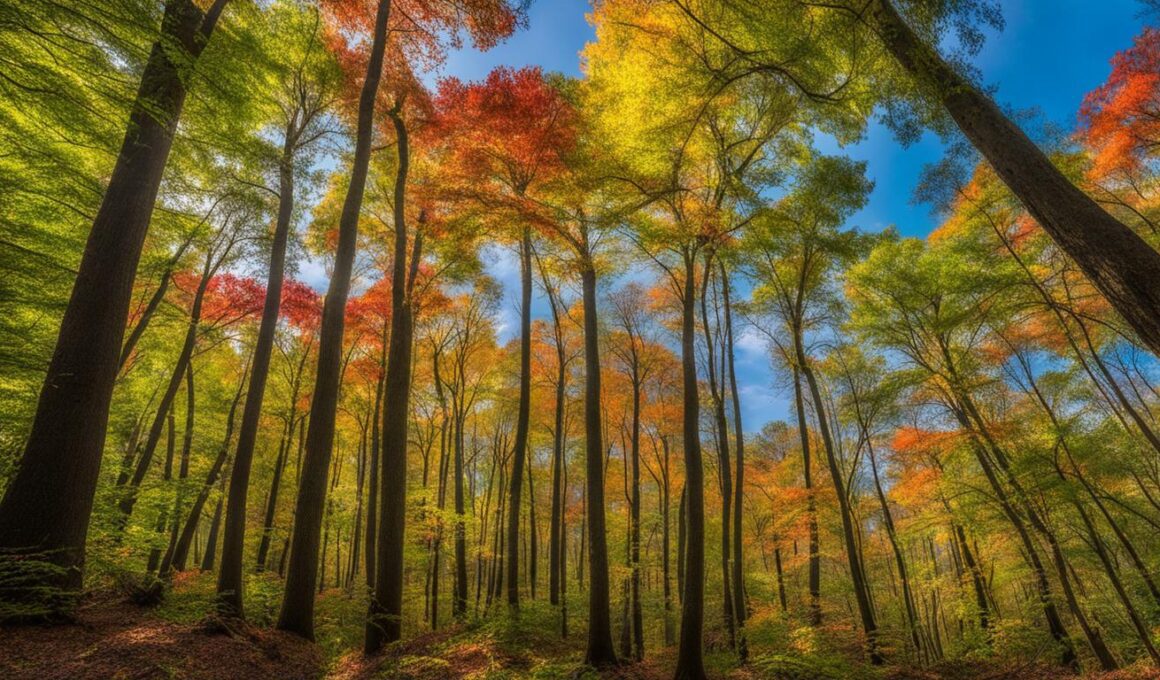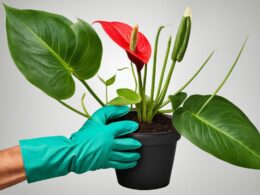Welcome to the enchanting world of Trees Of North Carolina! Nestled within the stunning landscapes of North Carolina’s diverse forests, you’ll discover a vast array of tree species that create a mesmerizing tapestry of colors, textures, and scents. From towering pines to majestic oaks, the state’s forests are home to an incredible variety of trees that captivate and inspire.
Throughout this comprehensive guide, we’ll delve into the majestic beauty of North Carolina’s tree species, exploring their distinct characteristics and unraveling their significance in the delicate balance of the state’s natural ecosystems. By immersing yourself in the captivating world of Trees Of North Carolina, you’ll gain a new perspective on the incredible diversity and importance of these magnificent trees.
As you embark on this journey, you’ll discover how Trees Of North Carolina contribute to the unique charm of the state’s forests, providing habitat for wildlife, improving air quality, and preserving North Carolina’s natural heritage for generations to come.
So hop on board, grab your binoculars and field guide, and let’s explore the awe-inspiring beauty of Trees Of North Carolina together!
Identifying Trees: Using Leaf Characteristics to Identify Common Tree Species in North Carolina
Identifying trees can be a fascinating and rewarding experience. By examining the different parts of a leaf and understanding their characteristics, you can confidently identify common tree species in North Carolina. The shape, margins, base, apex, and arrangement of leaves, along with other physical traits, play crucial roles in tree identification.
When it comes to identifying trees, paying attention to leaf characteristics is key. Take a close look at the shape of the leaf. Is it broad or needle-like? Are the margins smooth, serrated, or lobed? Notice the base and apex of the leaf as well. Are they rounded, pointed, or tapered?
Additionally, the arrangement of leaves on the tree can provide important clues for identification. Some trees have alternate leaf arrangement, where each leaf is positioned individually along the branch. Others have opposite leaf arrangement, where two leaves emerge from the same node in a paired fashion.
To make the identification process even easier, you can use a dichotomous key. This tool provides a series of statements with two choices that guide you through the identification process step by step. By observing the leaf characteristics and working through each couplet, you can narrow down the identification to correctly identify a tree.
The image below illustrates the different leaf characteristics and their role in identifying common tree species:
Leaf Characteristics for Tree Identification:
- Leaf Shape: Broad or needle-like
- Leaf Margins: Smooth, serrated, or lobed
- Leaf Base: Rounded, pointed, or tapered
- Leaf Apex: Rounded, pointed, or tapered
- Leaf Arrangement: Alternate or opposite
By honing your skills in identifying tree species based on leaf characteristics, you’ll become more knowledgeable about the diverse array of trees found in North Carolina. So go ahead, take a closer look at the leaves during your next nature walk and unlock the secrets of the magnificent Trees Of North Carolina.
Common Tree Species in North Carolina: A Closer Look at the Trees That Define the State’s Forests
North Carolina is blessed with a rich diversity of tree species that contribute to the beauty and ecological importance of the state’s forests. These common tree species are not only visually stunning but also play a significant role in supporting the local ecosystem.
- The Loblolly Pine, known for its tall stature and long needles, is one of the most prevalent tree species in North Carolina. It thrives in the state’s sandy soils and serves as an important timber crop.
- The Red Maple is another prominent species found throughout North Carolina. It gets its name from the vibrant red color its leaves turn in the fall, adding a stunning display of colors to the forests.
- The Oak genus encompasses several species, including the White Oak, Red Oak, and Black Oak. These majestic trees provide valuable food and shelter to a wide range of wildlife, making them an essential part of the forest ecosystem.
- The Yellow Poplar, also known as the Tulip Tree, is easily recognized by its distinctive tulip-shaped leaves. It is one of the tallest hardwood trees in North America and is highly valued for its quality timber.
- The Sweetgum tree is recognizable by its star-shaped leaves and spiky fruit. It offers beautiful fall foliage and its resin is commonly used in medicine and as an adhesive.
- The Hickory genus includes several species, such as the Shagbark Hickory and Pignut Hickory. These trees produce delicious edible nuts and provide vital habitats for various bird species.
- The Leyland cypress is a popular evergreen tree often used for landscaping due to its rapid growth and dense foliage. It adds privacy and beauty to residential areas.
- The Bradford Pear, despite being an introduced species, has become a common sight in North Carolina. Its abundant white flowers in the spring create a breathtaking spectacle.
- The Crepe Myrtle is known for its vibrant summer blooms, adding a burst of color to landscapes throughout the state. It requires minimal maintenance and is a favorite among gardeners.
- The River Birch is a beautiful deciduous tree with unique peeling bark that adds visual interest to North Carolina’s riverbanks and wetland areas.
- The Magnolia tree, with its large, fragrant flowers, is a beloved symbol of the southern United States. Its glossy leaves and impressive blooms make it a cherished ornamental tree in North Carolina.
These common tree species are just a glimpse of the incredible diversity found in North Carolina’s forests. Each species has its own remarkable characteristics, growth patterns, and ecological roles, creating a dynamic and thriving ecosystem.
By learning about these trees and their significance, you can develop a deeper appreciation for the natural wonders that surround you. Take the time to explore North Carolina’s forests and witness the beauty of these common tree species firsthand.
Conclusion
Trees Of North Carolina are not just beautiful, majestic organisms; they are essential components of the state’s ecosystem. Their presence contributes to the overall health and sustainability of North Carolina’s forests. By providing habitat for wildlife, Trees Of North Carolina support a diverse array of animal species, promoting biodiversity in the region. Additionally, these trees play a crucial role in improving air quality by absorbing carbon dioxide and releasing oxygen, allowing us to breathe cleaner air.
Furthermore, Trees Of North Carolina help combat erosion by stabilizing the soil with their extensive root systems. This helps prevent soil erosion and protects the integrity of the land. These trees also enhance the aesthetic appeal of the landscape, creating breathtaking views and picturesque scenes throughout the state.
No matter your background or interest, exploring the world of Trees Of North Carolina can be a rewarding experience. Whether you are an outdoor enthusiast seeking adventure, a nature lover fascinated by the wonders of the natural world, or simply someone who wants to deepen their connection with the environment, delving into the world of Trees Of North Carolina will enrich your understanding and appreciation of North Carolina’s diverse flora. So take the time to wander through the forests, observe the unique characteristics of different tree species, and embrace the wonders that Trees Of North Carolina have to offer.
Are Any Oak Trees from North Carolina Found in Texas?
Yes, several types of oak trees from North Carolina can be found in Texas, including the white oak, southern red oak, and blackjack oak. These iconic trees are well-suited to the climate and soil conditions of both states, making them a common sight in many woodlands and parks across Texas.










